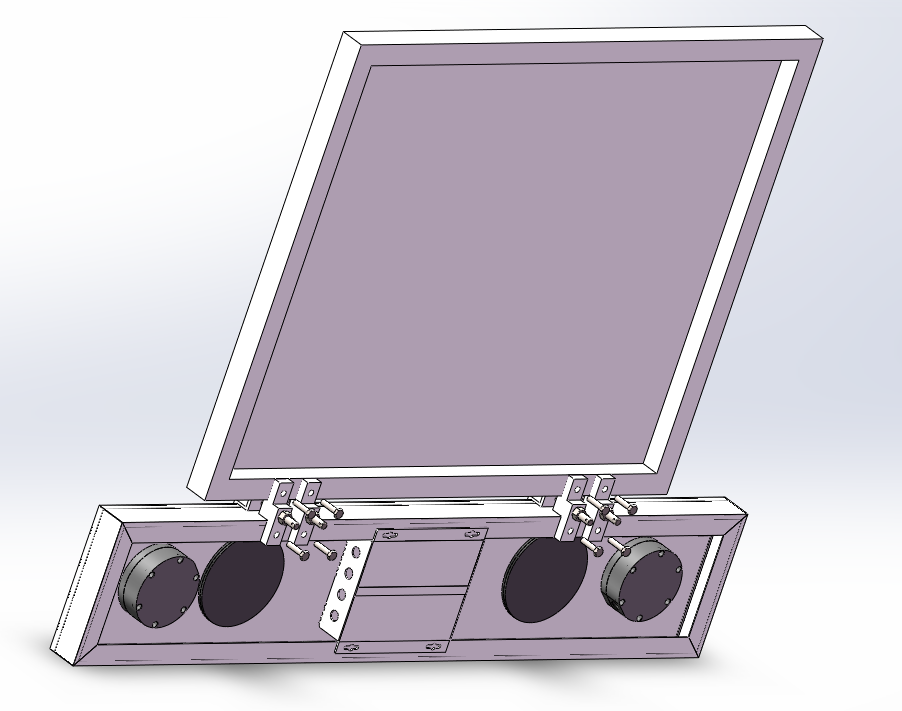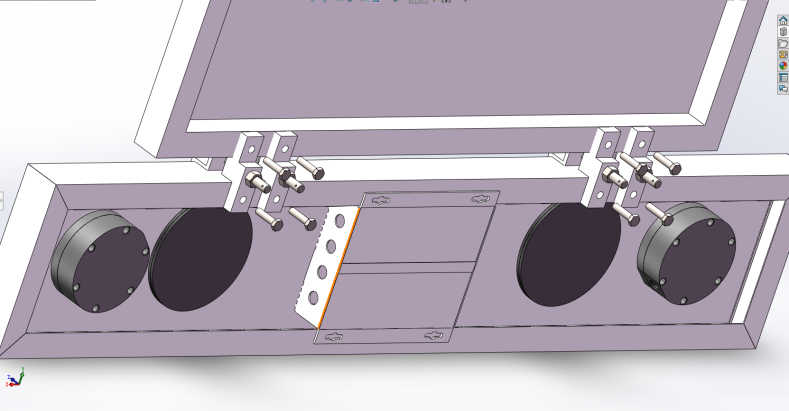

— Blogs —
—Products—
 Consumer hotline +8618073152920
Consumer hotline +8618073152920 WhatsApp:+8615367865107
Address:Room 102, District D, Houhu Industrial Park, Yuelu District, Changsha City, Hunan Province, China
Product knowledge
Time:2025-04-20 16:53:16 Popularity:10
With the continuous development of solar photovoltaic (PV) technology, the scale and number of solar power plants have gradually increased. At the same time, the issue of soiling (pollution) on solar panels has become a key factor affecting their long-term performance and efficiency. Dust, sand, pollen, salt, and other particulate pollutants can significantly reduce the photovoltaic conversion efficiency of solar panels, leading to a decline in power output. Therefore, how to effectively monitor and manage pollution to ensure that solar power plants operate at their optimal state has become a challenge that operators must face. Soiling stations have emerged as an important tool to address this problem.
A Soiling Station is a device used to monitor the pollution status of solar power plants. It can detect in real-time the pollution caused by particulate matter in the air (such as dust, sand, pollen, salt, etc.) on solar panels, and subsequently monitor the power loss of the panels. With this monitoring data, plant operators can accurately determine when and where to clean the solar panels, improving cleaning efficiency and reducing unnecessary maintenance costs.
A soiling sensor is the core component of a soiling station, responsible for detecting the level of pollution on the surface of solar panels. The sensor collects pollution data in real-time and wirelessly transmits the information to the monitoring system for analysis by the operator. Soiling sensors can typically monitor multiple pollutants, including dust, sand, salt, and more. The accuracy and stability of the sensors directly affect the reliability of the monitoring results, so selecting high-quality sensors is crucial.

The main principle of solar panels is to convert sunlight into electricity. However, pollutants on the surface of the panels can reduce light transmittance, preventing the panels from fully absorbing sunlight, which in turn affects their output power. Dust, sand, pollen, and other particulates block sunlight from reaching the panels, reducing their effective light exposure area, while pollutants like salt may corrode the panel surface, further decreasing efficiency.
In high-pollution areas such as deserts and coastal regions, the rate of pollution accumulation is fast, making the impact on solar systems especially significant. Therefore, to ensure the long-term efficient operation of solar power plants, regular cleaning of the panels is necessary. However, the timing and frequency of cleaning need to be determined based on the degree and rate of pollution.
The primary function of soiling stations is to help solar power plant operators monitor in real-time the power loss caused by pollution, and accurately determine the best time and location for panel cleaning. By continuously monitoring pollutants, soiling stations provide data support for operators' cleaning decisions, preventing over-cleaning and unnecessary maintenance.
1. Real-time pollution monitoring: Soiling stations can monitor the concentration of pollutants on the solar panel surface in real-time, helping operators stay informed about the plant's operating condition.
2. Precision cleaning strategy formulation: Based on pollution data, operators can formulate scientific cleaning plans, ensuring cleaning is performed at the right time and location for the best effect.
3. Reduce unnecessary cleaning and maintenance: With precise pollution data, operators can avoid frequent or excessive cleaning, thus reducing cleaning costs and labor expenses.
4. Increase power generation efficiency: By reducing the impact of pollutants, soiling stations help ensure the highest possible efficiency for solar power plants, improving the overall economic performance of the plant.

Soiling stations are widely used in large-scale utility and commercial industrial solar power plants. In these scenarios, the rate of pollution is usually high, especially in dry, desert, or coastal regions, where the accumulation of pollutants is rapid. For these plants, soiling stations are essential tools for ensuring long-term stable operation.
The use of soiling stations is also influenced by various factors, such as site location, local weather patterns, pollution sources, and cleaning costs. While not all solar power plants are required to install soiling stations, many plants install them during the construction and commissioning phase to meet the requirements of the International Electrotechnical Commission (IEC) 61724-1 Class A standard, ensuring the scientific and accurate nature of the monitoring.
According to the IEC standard, the number of soiling stations should be determined based on the installed capacity of the solar power plant (the number of soiling stations needed per megawatt). In practice, the number of soiling stations depends not only on the size of the plant but also on factors such as the terrain, climate, and pollution sources at the site. Therefore, determining the actual layout and quantity requires comprehensive consideration of various factors.
The installation and use of soiling stations not only improve cleaning efficiency and reduce maintenance costs but also help solar power plants achieve long-term cost savings. By predicting the best cleaning times, operators can avoid cleaning too early or too late, minimizing cleaning frequency and labor costs. Additionally, soiling stations can help quickly diagnose the causes of power loss, preventing faults caused by other issues in the plant.
1. Lower total cost of ownership: Soiling stations optimize cleaning strategies through accurate pollution data, avoiding unnecessary cleaning and reducing operating costs.
2. Size similar to solar panels: The size of soiling stations is designed to be similar to that of solar panels, making them easy to install and maintain.
3. All-weather measurement capability: Soiling stations can operate around the clock, ensuring continuous monitoring of pollution data.
4. Sensor redundancy design: To ensure data accuracy, soiling stations often use redundant sensors to prevent a single sensor failure from affecting overall monitoring results.
5. Temperature and tilt angle measurement functions: Many soiling stations are equipped with temperature and tilt angle measurement capabilities, further improving the accuracy of the data.
6. Compatibility with cleaning tools: Soiling stations are compatible with solar panel cleaning tools, making it easier for on-site operators to clean and maintain the panels.
With the rapid growth of the solar power market, the importance of soiling stations in solar power plants is increasingly recognized. By using soiling stations, plant operators can monitor the impact of pollution on solar panel performance in real-time, scientifically develop cleaning strategies, and enhance the long-term operational efficiency of the plant. While not all plants are required to install soiling stations, for those aiming for efficient and sustainable long-term operations, soiling stations are undoubtedly a key tool worth investing in.
Related recommendations
Sensors & Weather Stations Catalog
Agriculture Sensors and Weather Stations Catalog-NiuBoL.pdf
Weather Stations Catalog-NiuBoL.pdf
Related products
 Combined air temperature and relative humidity sensor
Combined air temperature and relative humidity sensor Soil Moisture Temperature sensor for irrigation
Soil Moisture Temperature sensor for irrigation Soil pH sensor RS485 soil Testing instrument soil ph meter for agriculture
Soil pH sensor RS485 soil Testing instrument soil ph meter for agriculture Wind Speed sensor Output Modbus/RS485/Analog/0-5V/4-20mA
Wind Speed sensor Output Modbus/RS485/Analog/0-5V/4-20mA Tipping bucket rain gauge for weather monitoring auto rainfall sensor RS485/Outdoor/stainless steel
Tipping bucket rain gauge for weather monitoring auto rainfall sensor RS485/Outdoor/stainless steel Pyranometer Solar Radiation Sensor 4-20mA/RS485
Pyranometer Solar Radiation Sensor 4-20mA/RS485
Screenshot, WhatsApp to identify the QR code
WhatsApp number:+8615367865107
(Click on WhatsApp to copy and add friends)